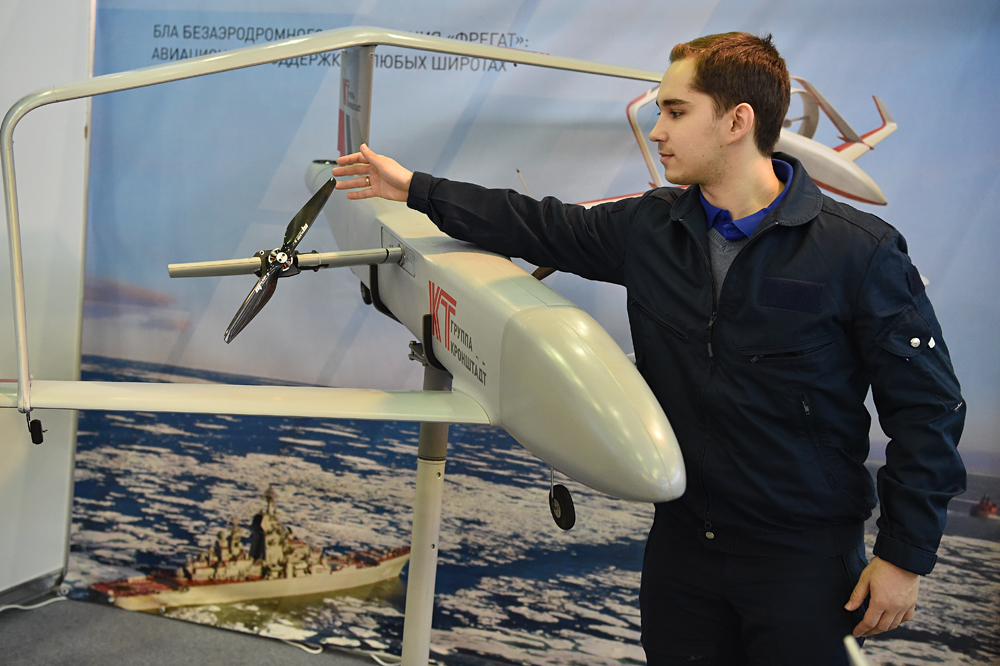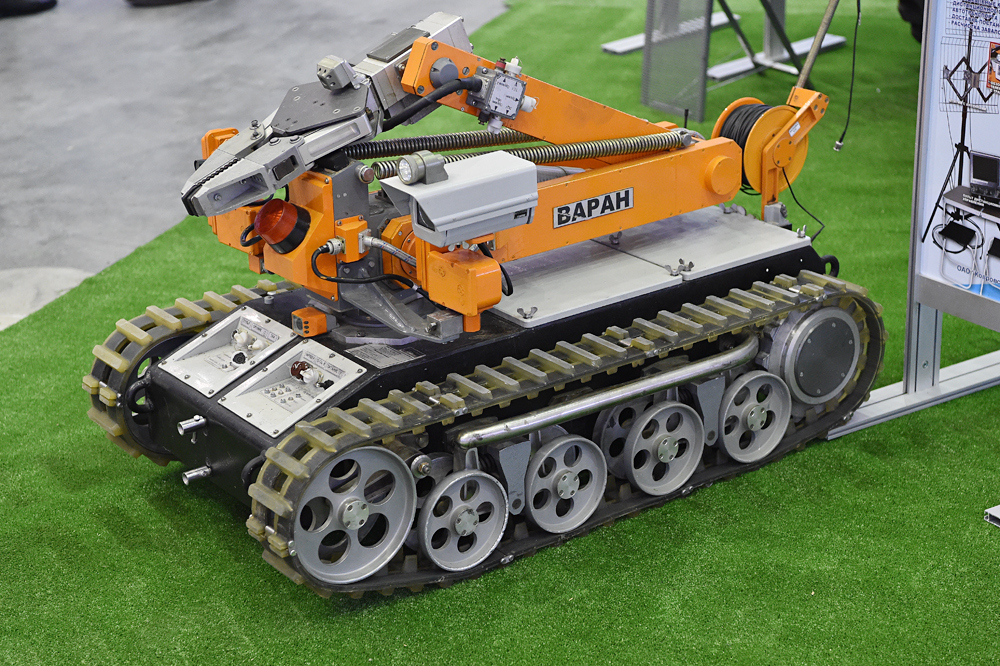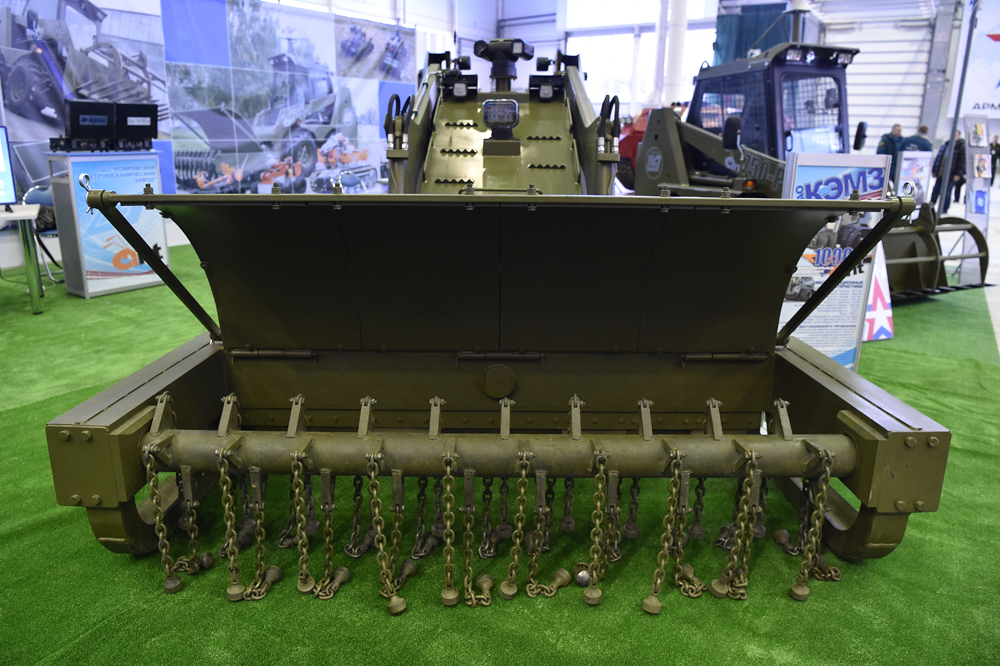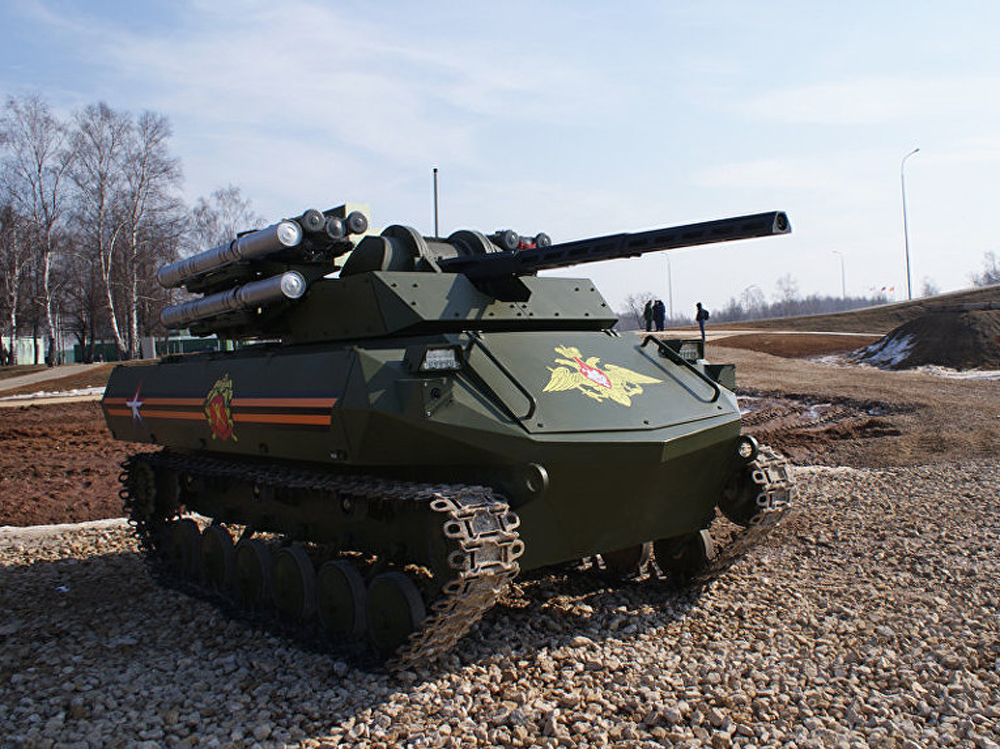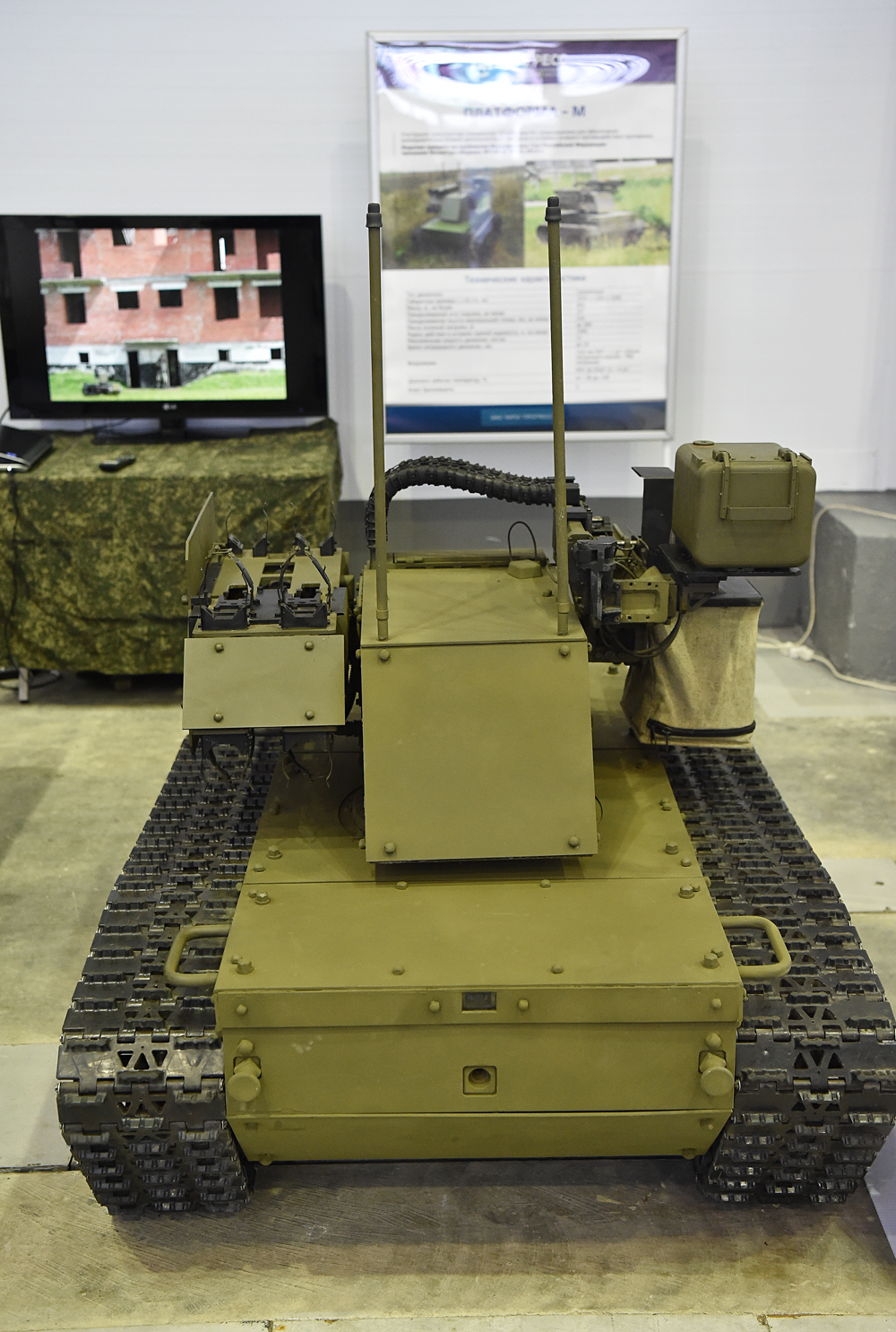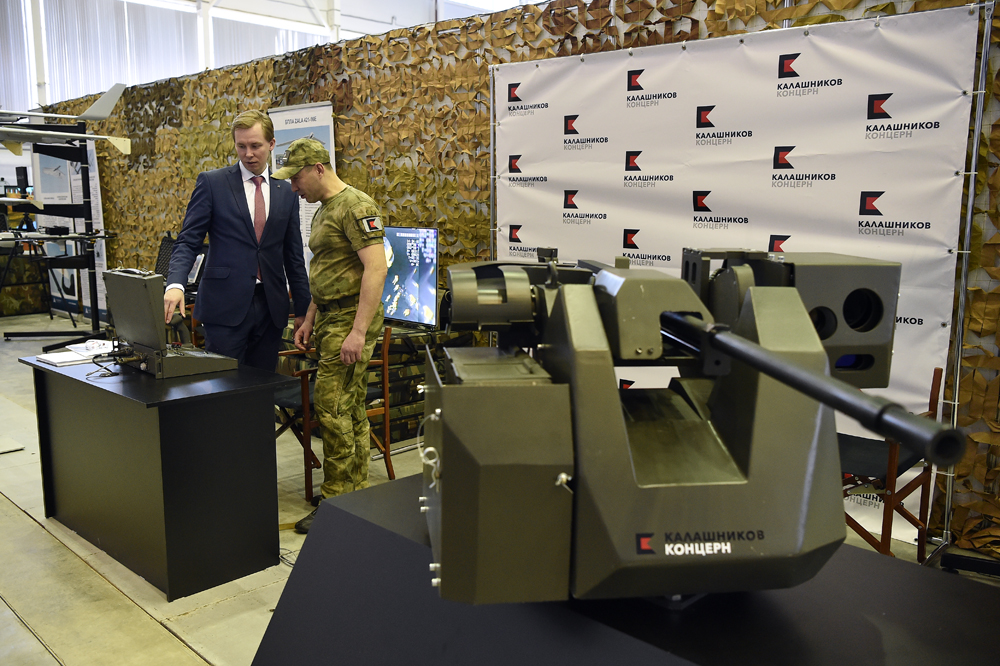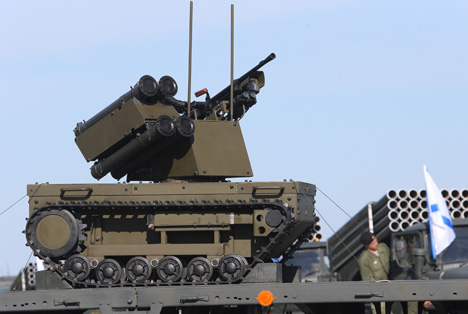Russia unveils military robots
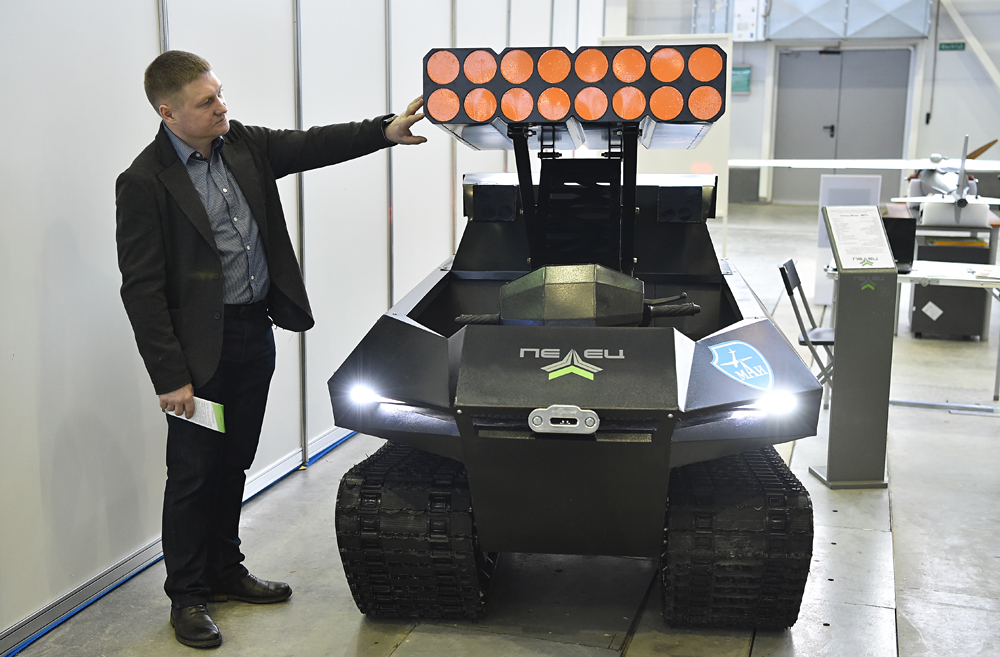
This rover is based on the Pelets-300 and Pelets-mini all-terrain vehicles. The platform is equipped with an intelligent automatic control unit. Robot rovers can be used in hazardous areas or as unmanned patrol vehicles.
Mikhail SinitsynThe goal of Russia's ambitious Robotics 2025 program, adopted in late 2014, is to develop military robots for every environment – water, air and land, Deputy Head of the Russian Ministry of Defense’s Research and Innovation Department, Roman Kordyukov, told RBTH.
At present, common technical requirements and standards are being developed for the military robots. The issue of import substitution needs to be resolved, testing grounds have to be established and effective cooperation between the defense industry and the end user of the robotics – the Ministry of Defense – must be organized.
The new robotic systems are already undergoing testing and according to the head of Russia's Robotics Research and Test Center, Sergei Popov, they will enter service in 2016.
Russia’s first attack drone
At an exhibition on robot automation and Russia's armed forces held in Moscow in February 2016 under the auspices of the Ministry of Defense, defense industry officials unveiled a series of robotic military attack systems.
The United Instrument Manufacturing Corporation (UIMC) announced the airborne robotics complex Razvedchik (Scout), consisting of a robot helicopter, an observation helicopter, a reconnaissance helicopter and an attack helicopter with a grenade launcher. All of these aircraft can operate both as a group and individually. For example, they can follow their own route, establish their position, "talk" to the other drones, perform reconnaissance work and transmit data.
"The helicopter with the grenade launcher in the Razvedchik system is the first attack drone in Russia," UIMC's Leonid Khozin told RBTH.
The attack drone itself did not appear at the exhibition, but a video released by the company shows it flying and firing its grenade launcher. Whether or not it was supposed to hit a specific target is not clear. However, the fact that it fires straight shows that with a targeting system on board it could certainly become an accurate "marksman" and justify being called Russia’s first attack drone, even if only a "light" version of it currently exists.
The all-seeing eye of the Korsar
According to the UIMC, in 2016 Russia could acquire another attack drone, which is to undergo official testing this summer. It is called the Korsar (Corsair), a short-range unmanned aerial vehicle. Тhe project is so secret that there are no publicly available images of it.
According to its developers, the unmanned aerial vehicle (UAV) is almost ready and is already flying and performing well.
The main function of the Korsar is surveillance, namely hyperspectral imaging, which will ensure that no one will be able to escape the drone's "sharp eyes." Nor will it be possible to deceive it using traditional methods of concealment, such as using inflatable mock-ups of military equipment. The drone will have the capability to detect any deception immediately and "see" the actual material and distinguish it from metal. Apart from a hyperspectral camera, the UAV could also carry other equipment including radar sets, electronic warfare systems and even weaponry.
"There is no attack version of the Korsar at the moment, but the possibility for it to have such a payload is there," says Khozin.
Read more: Underwater ‘gnomes’ proving a modern success story for Russia’s engineers>>>
All rights reserved by Rossiyskaya Gazeta.
Subscribe
to our newsletter!
Get the week's best stories straight to your inbox
